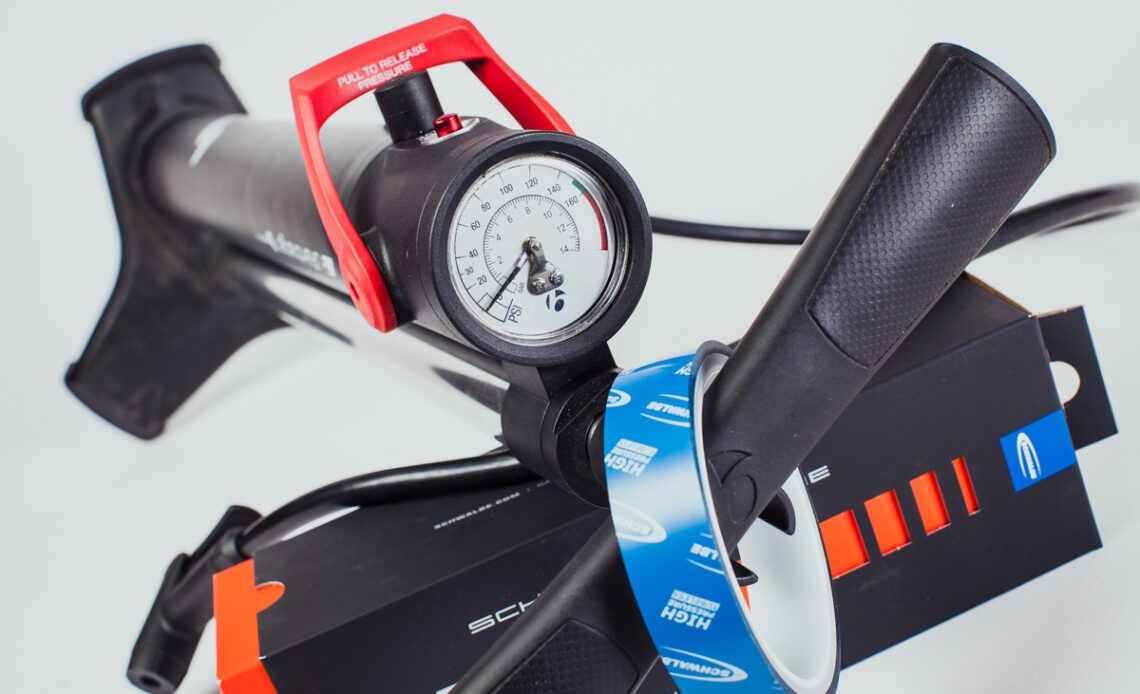Having the right amount of air in your tires is important for various reasons. It can affect performance, handling, and comfort. But different situations call for different pressures, says Nick Di Cristofaro, an experienced bike mechanic and the service manager at Forza Performance.
Factors that can affect pressure
Everyone and every ride is different, Di Cristofaro explains, so you need to consider several things.
1. Rider’s weight
“Heavier riders may need higher tire pressure to support their weight and prevent pinch flats,” Di Cristofaro says.
2. Terrain
The mechanic notes that riding on rougher and bumpier roads may require lower tire pressure for better traction and a smoother ride, so consider your riding surface.
3. Tire size
Different tire sizes have recommended pressure ranges, and the appropriate pressure may vary.
4. Weather conditions
In colder weather, tire pressure can decrease, so you may need to add more air to compensate.
5. Rim choice
Whether you have hooked or hookless rims will affect your tire pressure choice, he adds. “Hookless rims require much less pressure. Overinflating a tire on a hookless rim can lead to it blowing off, which is very dangerous.”
6. Clincher or tubeless
You can run much lower pressure with tubeless tires without sacrificing speed and durability. “Check the manufacturer’s recommendations for your specific tires and consider these factors to find the optimal tire pressure for your ride,” Di Cristofaro advises.
Rainy days
If you’re heading out to a race or ride and the roads are slick, what does that mean for your tire pressure? Should you reduce it? And by how much?
“Generally speaking, I recommend slightly reducing your bicycle tire pressure to improve traction and grip on wet surfaces. A common rule of thumb is to decrease the tire pressure by five to 10 pounds per square inch (PSI) from your usual pressure. However, this may vary depending on factors like your weight, tire width, and riding style,” he explains. “Lowering the tire pressure increases the contact patch of the tire with the road, which can help enhance traction and reduce the risk of slipping on wet surfaces. Be cautious not to lower the pressure too much, as extremely low pressure can lead to a higher risk of pinch flats or rim damage.”
Optimal pressure for races with sharp bends
What about someone doing a criterium with twists and turns? If they’re using, let’s say, a 28 mm tire, what’s the ideal…
Click Here to Read the Full Original Article at Canadian Cycling Magazine…


